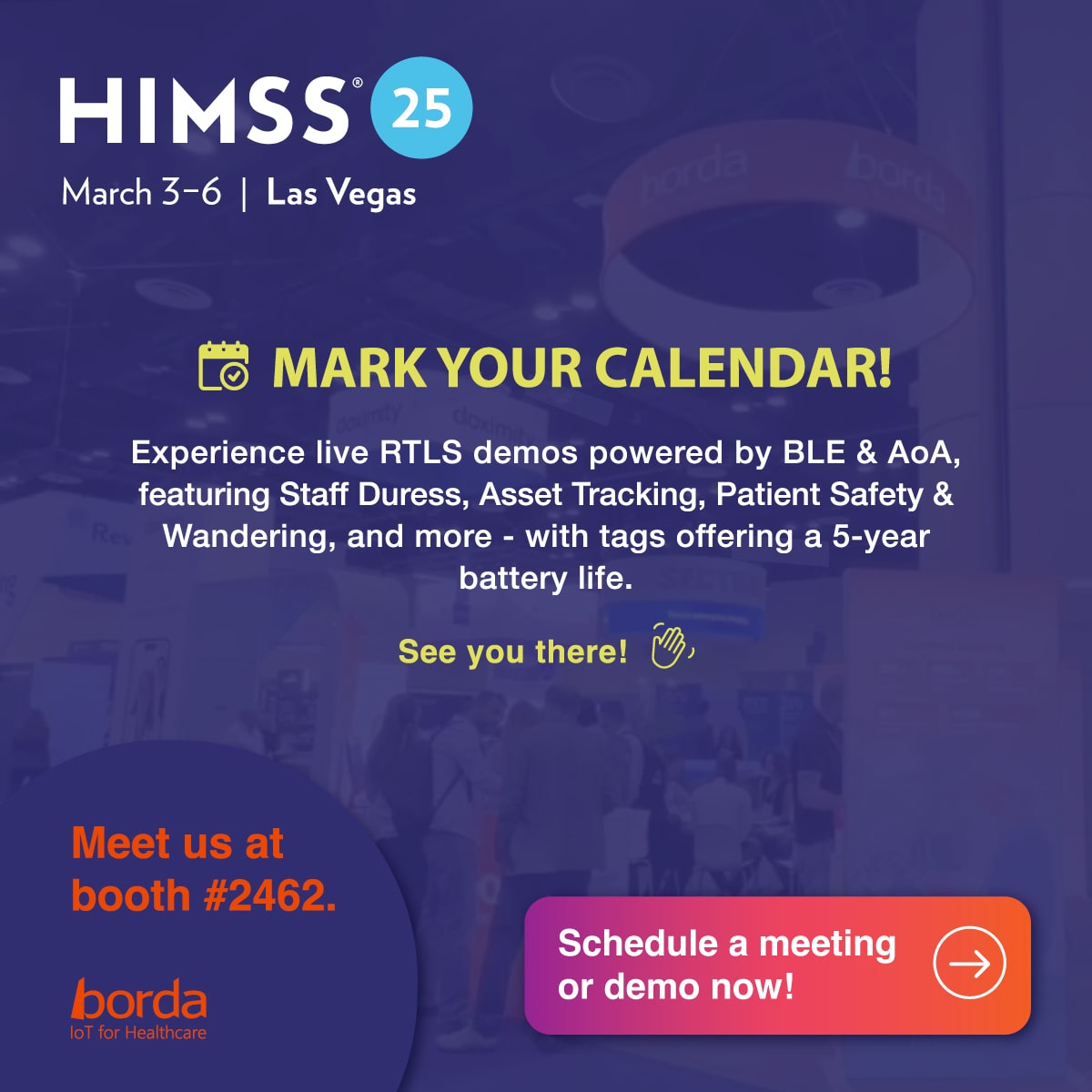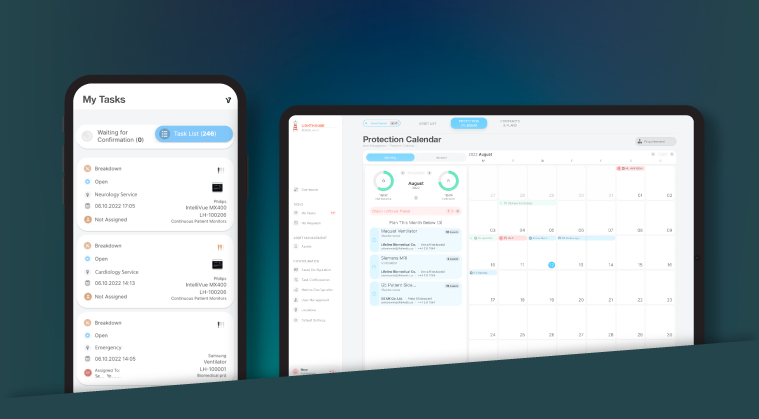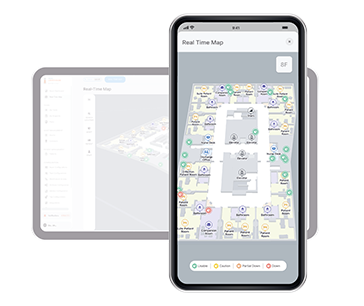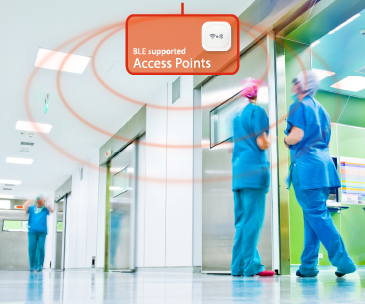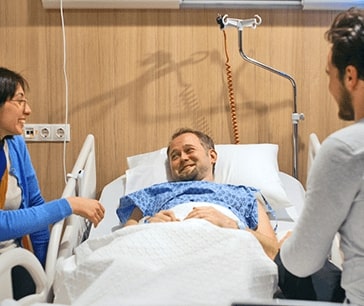
How to Improve Patient-Centric Processes with Hospital RTLS
How to Improve Patient-Centric Processes with Hospital RTLS
In the busy corridors of a hospital, every second counts. Patients flood in seeking care, and the pressure is on hospitals to streamline operations without compromising on quality. In this dynamic environment, the need to optimize operations while maintaining excellent care is crucial. By leveraging location-based data, Real-Time Location Systems (RTLS) empower healthcare providers to make informed decisions, enhancing efficiency, improving patient outcomes, and elevating the overall quality of care.
Imagine a world where hospitals are running smoothly, and seamlessly coordinated with the flow of patients, staff, and assets to ensure optimal care delivery. With hospital RTLS, this vision becomes a reality. From enhancing hospital asset tracking to patient navigation and optimizing staff workflow, RTLS technology offers many creative solutions to the challenges faced by busy hospitals. Let’s delve into tips on how hospitals can leverage the power of RTLS and ensure seamless patient journeys.
Mapping Patient Journeys with Pinpoint Precision
At the heart of Hospital RTLS lies the ability to track the real-time location of patients, staff, and medical assets with unparalleled accuracy. By leveraging this technology, hospitals can map the patients’ journeys from admission to discharge, identifying bottlenecks, inefficiencies, and opportunities for optimization along the way. Whether it’s tracking wait times in the emergency department or monitoring patient progress in surgical suites, Hospital RTLS provides invaluable insights into patient flow dynamics, enabling hospitals to streamline processes and enhance the overall care experience.
Optimizing Patient Flow in Operating Room Process through Patient Tracking: RTLS in hospitals can assist in identifying bottlenecks, particularly in the operating room process, and reducing patient wait time. This technology tracks the precise location of patients in the operating room using a combination of tags, readers, and software. Patient Tags, worn by patients, emit a signal picked up by readers throughout the operating room. RTLS-enabled Patient Flow product tracks patients as they move through the pre-op, surgery, and post-op stages, providing information on how long each step takes. All data, including patient length of stay in pre-op and post-op, transfer times in between, surgery start times, and many more, is automatically recorded and accessible to managers via visual reports. These real-time and historical data can be used to efficiently schedule surgeries, move patients through the process as quickly and smoothly as possible, reduce the risk of long wait times, and ultimately improve the overall quality of care. These real-time and historical data can be used to efficiently schedule surgeries, move patients through the process as quickly and smoothly as possible, reduce the risk of long wait times, and ultimately improve the overall quality of care.
Facilitating Patient Navigation: Navigating through large hospital complexes can be challenging for patients and visitors, leading to delays in accessing care. RTLS technology can provide real-time navigation assistance, helping patients and visitors find their way to specific departments, clinics, or amenities within the hospital. Indoor wayfinding solutions provide patients and visitors with interactive maps and turn-by-turn directions to navigate the hospital environment. These digital maps can be accessed via mobile apps or kiosks located throughout the facility. By offering intuitive guidance from the point of entry to their destination, patients can navigate complex hospital layouts with ease, reducing confusion, minimizing the risk of getting lost and improving the overall patient experience.
Real-Time Asset Visibility for Patient Care
RTLS technology represents a transformative force in modern hospital management, offering a multifaceted solution for maximizing efficiency, cutting costs, and optimizing patient outcomes throughout the healthcare journey. Manual tracking processes often result in inefficiencies, with nurses spending valuable time searching for assets. By ensuring quick and accurate access to medical assets, hospital RTLS significantly improves operational efficiency and provides top-notch patient care.
Enhancing Asset Tracking: Imagine a hospital where critical medical assets, from ventilators to infusion pumps, are always at the fingertips of healthcare professionals, optimally utilized, and readily available when needed. By leveraging various tracking technologies such as RFID tags, Wi-Fi, or BLE, RTLS provides continuous updates on the whereabouts of assets. Asset Utilization product through RTLS asset tracking capability allows hospitals to minimize the time spent searching for items, ensuring they are readily available when needed for patient care. This hospital asset tracking capability leads to significant improvements in patient flow, minimizes delays in treatment, and enhances the overall patient experience.
Workflow Optimization for Patient-Centric Journey
Staff workflow management optimization in hospitals experiences a transformation with the integration of RTLS technology, significantly enhancing patient experiences and overall operational efficiency. By optimizing staff workflow management through RTLS technology, hospitals can achieve higher levels of productivity, reduce wait times for patients, and ultimately deliver more timely and effective care across the entire healthcare process.
Optimizing Labor Force: RTLS revolutionizes hospital operations by providing precise, real-time visibility of staff locations and status to focus more on patient care and enhance patient experiences in healthcare facilities. Location-aware Work Demand Management through RTLS personnel/staff tracking, eliminates the need for manual task assignment by dynamically assigning each task to the most suitable porter in less than 10 seconds based on their real-time location and current workload information. Leveraging RTLS in hospitals can minimize extra labor costs and streamline task assignment, optimize workflow efficiency, and reduce waiting times, leading to timely & high-quality patient care.
Streamlining Staff Workflow: Effective staff utilization is crucial for optimizing hospital operations and patient care. Staff Utilization product hospitals to streamline staff workflows, minimize idle time, and ensure that each member of the healthcare team is deployed where most needed. This deeper understanding enables patients to benefit from increased interaction with staff, ultimately resulting in a more personalized and superior patient care experience.
In conclusion, the integration of RTLS technology stands as a game-changer in hospital operations, significantly enhancing patient flow and overall efficiency. By providing real-time visibility into the location and status of patients, staff, and assets, hospitals RTLS delivers superior patient care by maximizing operational efficiency and ensuring resources are allocated where they are needed most, ultimately enhancing the overall patient experience.
Getting started is easier than you think. To streamline your healthcare operations and facilitate patient flow, consider adopting our end-to-end ”IoT for Healthcare” products today. Contact our Sales Team today and see what you will gain with game changer RTLS technology.

